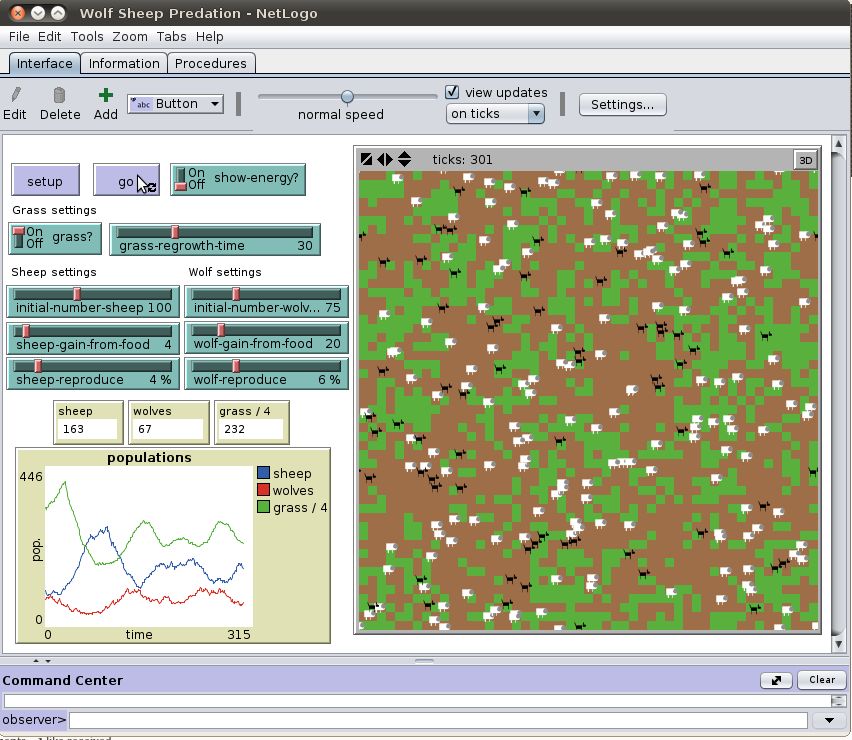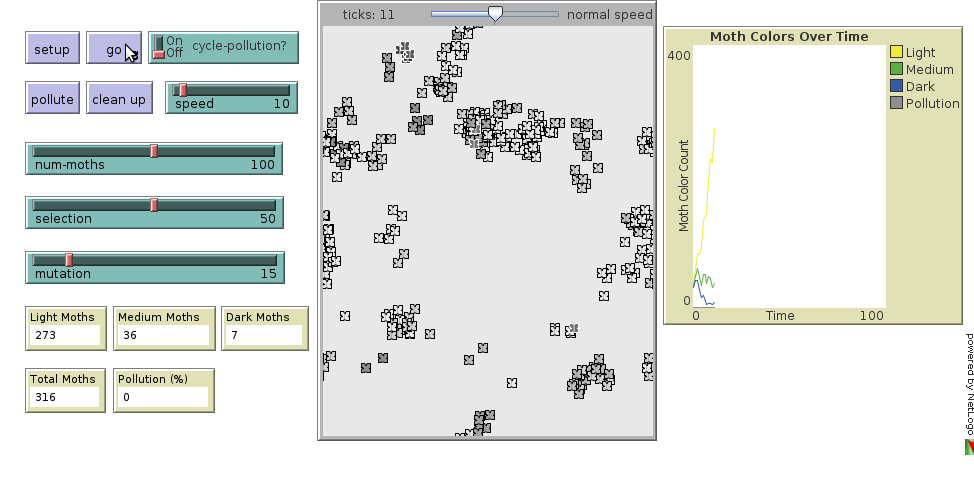I was invited to give a guest lecture on introductory ecology for an introductory environmental science course at University of the Pacific in Stockton today. This provided both a nice outreach opportunity and a chance to speak to a full introductory class for 1:45hr, which I haven’t done before.
I ran the class something as an experiment for myself as much as an instruction. Having spent considerable time thinking more-or-less abstractly about effective teaching strategies with carefully planned lectures, activities, objectives, and assessments, I found myself suddenly at the other end of the spectrum: faced with giving a long lecture covering pretty much my entire field with little time to prepare and only the fuzziest objectives. Where to start? Like any other academic, I began by snatching up the textbook.
Flipping first to the chapter questions, then to the outline, I saw Population growth curves, types of species interactions, nutrient cycles, some adaptation and evolution. The questions and emphasis seemed uninspired, as did I. I wanted to communicate some of the excitement of the field as I saw it – though bouncing a few stories off of my housemates quickly convinced me that natural history stories were going over much better than my attempt to explain why bet-hedging in a stochastic environment was so cool and deliciously counterintuitive. I had no idea how to prepare, other than that I didn’t have the time or interest to create enough slides to fill 1:45hr of facts and information.
I settled on constructing the talk around Netlogo simulations in hopes of providing some interaction and a more tangible feel for population dynamics. I went into the lecture with no notes, only a cursory outline, a set of netlogo simulations, and a desire to hit basic concepts of population dynamics as I see them: exponential growth, density dependence and regulation from above and below. The challenge of coexistence to motivate the concept of niches.
I muddled my way through with questions, examples, stories, and very disorganized board work, and continually suppressing the urge to write equations. The students were very nice to me - warned that some might have their heads down the whole time and they were apt to be shy, I found many willing to share, vote, or even call out answers. It was only rather late in the class when another question showed the class divided on the outcome that I asked them to talk to their neighbors – apprehensive that they’d never been asked before. With hardly a pause, they all began talking. By the time chatter quieted, most seemed to reach the right answer. Though I didn’t have clickers, wish I had tried more think-pair-share moments in the class.
Sketch of some of the Topics I covered

Simulation of predation. Began with example of exponential growth: immortal grass and no wolves. Explain each sheep gives birth to a new offspring after a certain time interval of grazing, try to guess what the growth curve will look like. Students quickly pick up on the need for finite resources, and I turn on the grass to show population stablize. Trying just wolves and sheep (which aren’t easy to get to coexist with infinite grass!) to illustrate regulation by predation as a another density-dependent mechanism was somewhat less effective – must practice demos! 
I used the simple birth-death simulation to show that equal rates don’t guarantee coexistence. Perhaps the challenges with the wolf-sheep dynamics already helped illustrate this, but still comes as a surprise to the students. Not sure if the message of common resources got across, and probably shouldn’t have attempted a discussion of temporal niches.
From there I moved away from netlogo and into examples of interactions largely through natural history. Fun storytelling, but without slides and very limited board work, I’m not sure how much was conveyed.

I closed with the evolutionary story of the pepper moths, a simulation I’m much more familiar with but also one in which I cannot resist calling attention to many of the interesting ecological dynamics it exhibits – Neutral theory, temporal niches, sudden crashes, competing timescales – all of which probably deserved more time than I gave it.
General Reflections
Certainly not my best moment; perhaps redeemed more by the interest the students showed than by any knowledge I really imparted. During a five-minute break (which allowed me to collect my thoughts as much as them to stretch there legs), a student remarked to the regular instructor, Alex Geddes, “now this is getting exciting!”
From the sections I had taught some kind of lesson on before, I realized how much experience/practice discussing the material helped organize my thoughts and clarity of presentation. I’ll have to learn to summarize better as I go along, and provide the kind of structure to the ideas that I’ve learned to do in my outdoor ed courses after so many years: “so there’s there’s really three main parts to X…”